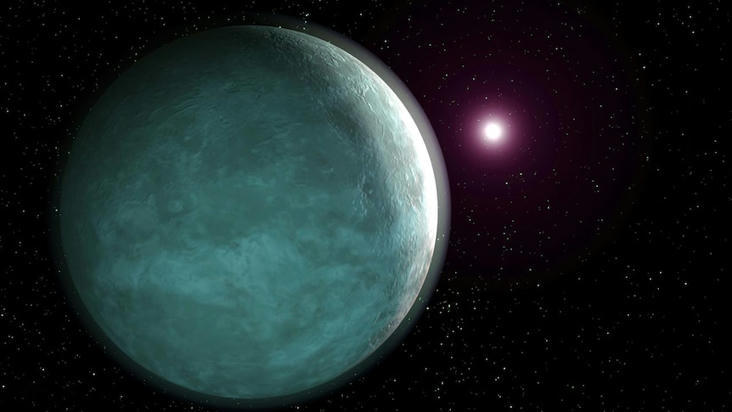
A scorching hot world where metal clouds rain drops of titanium and other metals has been designated as the most reflective planet ever observed outside of our Solar System by astronomers.
Key points:
- The side of exoplanet LTT9779b facing its star reaches 2,000 degrees Celsius
- This helps it form metallic clouds that act like a shield and reflects 80 per cent of light
- Scientists say this also prevents its atmosphere from being blown away, defying the odds
This strange world, which is more than 260 light years from Earth, reflects 80 per cent of the light from its host star, according to new observations from Europe’s exoplanet-probing Cheops space telescope. That makes it the first exoplanet comparably as shiny as Venus, which is the brightest object in our night sky other than the Moon. First discovered in 2020, the Neptune-sized planet called LTT9779b orbits its host star in just 19 hours. Because it is so close, the side of the planet facing its star is a sizzling 2,000˚C, which is considered far too hot for clouds to form. Yet LTT9779b seems to have plenty of them. “It was really a puzzle,” said Vivien Parmentier, a researcher at France’s Cote d’Azur Observatory and co-author of a new study in the journal Astronomy and Astrophysics. The researchers then “realized we should think about this cloud formation in the same way as condensation forming in a bathroom after a hot shower,” he said in a statement. Like running hot water steams up a bathroom, a scorching stream of metal and silicate — the mineral of which glass is made — oversaturated LTT9779b’s atmosphere until metallic clouds formed, he said. These clouds “act like a mirror,” reflecting away light, according to the European Space Agency’s Cheops project scientist Maximilian Guenther.
Read the full article at: www.abc.net.au